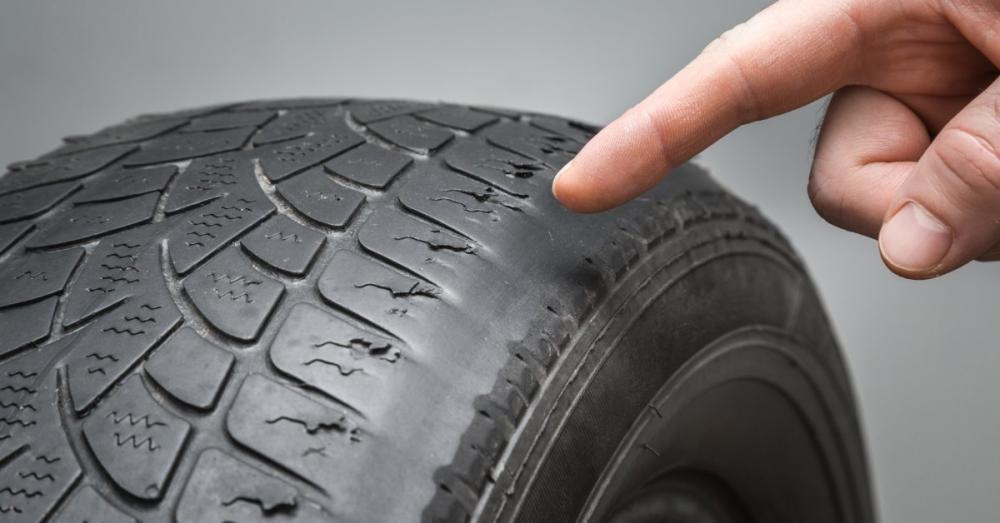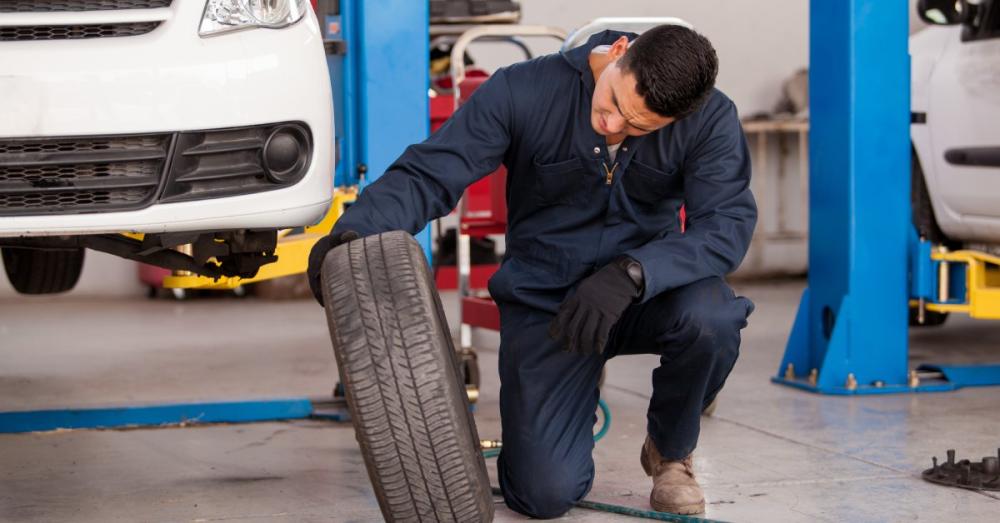The best part of owning a car is the personal freedom it provides. However, vehicle ownership also means you’ll have additional responsibilities, namely car maintenance. While many of these tasks are things you only have to do once or twice in the vehicle’s lifetime, some of them are much more frequent.
In this post, we want to focus on one maintenance task that often gets forgotten about: tire rotations. Keeping up with these is essential for your safety on the road, so there’s a lot you should know about rotations. That’s why we’re here to talk about when and how to get car tires rotated. That way, you can ensure that you’re never late for this crucial bit of maintenance.
What Is a Tire Rotation?
First, let’s go over what exactly a tire rotation is. It’s actually quite simple, as tire rotation entails the switching of your front and back tires. However, you never want to simply switch the fronts and backs on the same side. There are three crisscross patterns that vehicle manufacturers recommend for the most even wear. These patterns are known as the rearward cross, forward cross, and X-pattern.
In the rearward cross, you take the front two tires and move them to the back of the vehicle on opposite sides. Then, you simply move the back tires directly to the front. The forward cross is the opposite of this. When bringing the rear wheels forward, you’ll want to switch the sides of the vehicle they’re on before moving the front wheels directly back. The X-pattern combines these two techniques by crisscrossing both sets of wheels as you move them to the opposite half of the vehicle.
The best tire rotation option for you will depend on the type of vehicle you have. The rearward cross is ideal for real-wheel drive vehicles, while the forward cross is best for forward-drive cars. The X-pattern is reserved specifically for vehicles with four-wheel drive.
Why Should You Do Tire Rotations?

With the basics out of the way, it’s important to understand why tire rotations are so important. Most notably, tire rotations help your tires wear more evenly. In general, tires don’t wear evenly because vehicles put different amounts of pressure on certain parts of each tire. If you let this go on for too long, your tires could become bald in certain locations. By switching their position often, you’ll help combat this issue.
By allowing your tires to wear out more evenly, you’ll be able to help them last for as long as possible. Uneven wear will reduce the amount of tread you have in certain sections of your tires more quickly, leading to them becoming unsafe to use. On top of that, by keeping tire wear more uniform, you’ll be able to improve your vehicle’s traction and handling since the parts of your tires that go through heavy usage will have more grip after a tire rotation.
How Often Should You Rotate Your Tires?
While this is all good information to know, you might now be wondering how often you should rotate your tires. While recommendations vary, the average for most tires is anywhere between 6,000 and 8,000 miles.
If your tires are new, it might be better to rotate them every 5,000 miles. The reason for this is that newer tire treads are more susceptible to wearing unevenly. Once you’ve had your tires for a couple of years, you can rotate them less often without seeing any negative side effects.
However, something to be aware of is there will be times when you might need to rotate your tires sooner than these suggestions. The tricky thing about cars is that nothing is ever consistent. Your wheels could wear out quicker than normal. That’s why it’s important to keep an eye on your tire tread. This way, you can catch it if something seems abnormal.
What’s the Best Way to Get Your Tires Rotated?

While some people choose to rotate their vehicle’s tires on their own, it’s highly recommended to leave it to the professionals. Rotations might sound simple, but you need access to tire equipment you likely don’t already have. Plus, since you’ll need to lift your vehicle off the ground, it can be quite dangerous if you’re not familiar with working on cars.
That’s why it’s best to have the pros handle your tire rotations. The best part of this is that you don’t need to bring your vehicle in specifically for tire rotations. Most service departments will take care of rotations when you schedule an oil change. Since the frequency of oil changes and tire rotations vary a bit, you might not need a rotation every time you bring your car in for a service job. Some tires are fine to only receive a rotation every other oil change.
The best part of having your tire rotations professionally done is you won’t have to remember anything. Your service provider will keep a record of the last time you had one done and which tires moved where. Your tires will wear as evenly as possible throughout the life of your vehicle.
What Should You Do if a Tire Rotation Isn’t Enough?
Even though knowing when and how to rotate your car’s tires will help prolong their lifespan, the day will come when a rotation won’t fix your tire issues. When that happens, you’ll need to start looking into buying a new set. Lucky for you, you’re already in the right place to find new tires. WheelerShip is a wheel and tire company that has a massive selection of tires available for those who need quality replacements.
All you have to do is find a set that works for your vehicle, order them, and we’ll get them sent out to you as soon as possible. Once you get your new tires, take them to your regular service provider, and they’ll get them properly installed for you. The best part about this is they will now be able to easily record that you have a new set of tires. That way, the next time you’re in for an oil change, your service provider will know exactly how long you’ve been driving on the new set of tires and rotate them accordingly.
